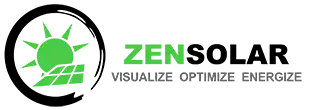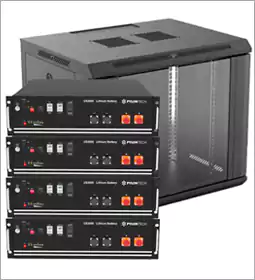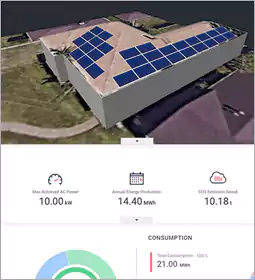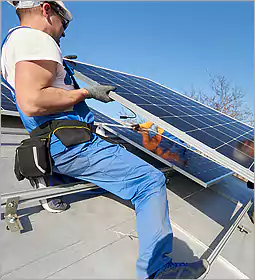7 Costly Solar Mistakes to Avoid at Design
When planning your solar energy system, here are 7 mistakes that could cost you and impact on your scaling abilities
ZenSolar, a subsiduary of Zentyl Technologies (Pty) Ltd, ably led by Conan Campbell, the mind and driving force behind the vision.
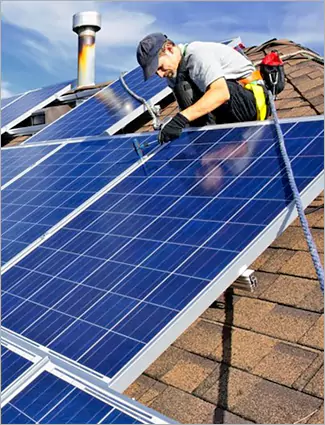
1. Confusing off-grid and grid-tie
Solar power allows you to generate your own energy, which means you won’t pay for power from the utility grid. People assume this means they will be “going off the grid,” but that’s not accurate.
In reality, most people are looking for a grid-tied solar system.
Here’s the distinction: your panels generate energy, but you need a way to store that energy for later use. If you have access to power lines, you can store the energy you generate in the utility grid. The utility company will credit you for extra power produced, and allow you to pull from the grid when you need it.
Off-grid properties have no access to power lines, so they need another method to store energy. That means off-grid systems need a battery bank to function. Batteries are expensive, but with no option to store power in the grid, they are mandatory for off-grid systems.
The bottom line is that saving money and being independent from the grid are mutually exclusive. Batteries eat into your ROI (return on investment), and grid-tied properties don’t need them.
You don’t need to go “off the grid” to get the benefits of solar power. If your property has access to power lines, grid-tied solar is the smartest option.
Why pay for batteries when the utility grid will take care of storage for you?
2. Improper system sizing
Sizing a solar system is more complex than it appears at face value.
If you’re just starting out with your research, you might think it’s as simple as looking at your latest energy bill, then buying enough panels to cover that usage.
But that would ignore factors like climate, panel orientation, shading, natural efficiency drop, and other things that impact the “true” output of your system.
That’s why we won’t sell complete systems to anyone until they’ve consulted with one of our in-house solar design techs.
During that conversation, we plan your system to account for the variables most people don’t think about. Some common ones are:
Efficiency
Panels have an efficiency rating, and they suffer a 0.5-1% efficiency drop every year. 20 years after you install it, your panels will be 10-20% less efficient. We design a bit of extra headroom into your system to account for the loss of efficiency.
Climate
Solar panels are tested in ideal conditions: an indoor factory with temperatures in the mid-70s. In the real world, your system can be exposed to much harsher conditions. High temperatures can reduce the amount of energy you generate.
Your location also dictates how many sun hours you get. The term “sun hours” doesn’t mean “how long the sun is in the sky.” It refers to the amount of time the sun is in the right position to generate peak energy. Most places get 4-6 sun hours per day, and the exact amount influences system sizing.
Voltage
Inverters and charge controllers have maximum and minimum voltage input windows. Panels and batteries have a voltage rating as well.
Your system needs to be designed at the right voltage based on the equipment being used and what it requires. We also account for things like temperature that can affect voltage and system performance.
If you don’t have the right voltage from your solar panels or battery bank, your system might not perform well or worse – you could damage expensive hardware.
Battery bank sizing
Mismatching your battery bank with your charging source is the most common issue when it comes to batteries, specifically with off-grid system sizing. Your array needs to supply enough power to keep the batteries charged, but not so much that they overcharge.
Too much current could damage your batteries from overcharging. On the other hand, undercharging your batteries can have an even worse effect.
Certain batteries need to be brought up to full charge on a regular basis. Leaving them at empty or partial charge for an extended period of time can cause the batteries to fail prematurely.
3. “Solar prevents power outages!”
You’re generating your own energy, so the lights should stay on during a power outage, right?
Unfortunately, that’s not the case with grid-tied solar systems. Although the power originates from your panels, it is still stored in the public utility grid.
When the grid power goes out, so does yours, because there’s no infrastructure to feed that power to your property.
The remedy for this is a grid-tied system with battery backup. When the power’s on, it functions like a normal grid-tied system. During an outage, a small backup battery bank kicks in to keep the lights on.
It costs a bit more, but the peace of mind is invaluable, especially if you live somewhere with extreme weather conditions or unreliable power from the grid.
4. “Solar is a bad investment” / “Solar isn’t feasible without the tax credit”
Look, solar isn’t cheap. It’s a 4 to 5 figure investment. We know that’s a big commitment.
But electricity from Eskom isn’t cheap either, and it’s only going up in price.
The reality is when you look at the long-term value of owning a solar system, most grid-tied systems pay for themselves fairly quickly and actually make you a profit over the life of the warranty.
Investing in a solar system for your home or offices is certainly that. An investment. Not an expense. It pays back into the system and pays for itself over the medium to long term. Unlike your car. It drives you around, offers transportation and allows your to earn. But the car itself costs money, depreciates in value, and needs replacing in 2-4 years in order to maintain relative value, and when replaced the payments continue.
With solar you are paying in and after a time period - say 5-8 years on, your payments reduce or you continue paying and set that aside towards expanding your system or newer batteries or inverter.
Here’s the quick version:
Let’s use a system that costs ~R200 000 (to make the calculation easy). That would get you something like this 7.2kW system.
5. Leasing
Solar power is a sound investment ... if you own your system.
When you lease your system from a third party through a Power Purchasing Agreement (PPA), the value of that investment pretty much vanishes.
We can think of a few reasons why leasing is a bad deal.
The first thing to understand is the lender owns the system, which means they’re eligible to claim all the incentives. You won’t see a penny from the 30% federal tax credit or any local rebates.
After you’ve been squeezed out of the incentives, you’ll also pay a premium rate to lease the panels, which includes interest. In all, you might find you paid twice as much to lease the system as it would cost to finance and own the system yourself.
Leasing also makes it more challenging to sell your home. You have to transfer the lease to the buyer upon sale. Or, you can pay off the remainder of the lease balance and add that amount to your asking price. Both options limit the pool of potential buyers for your home.
6. Not planning ahead
I brought up the fact that most panels are warrantied for 25 years. That’s a long time to go without any big changes in your life.
When people start planning their system, everyone thinks about what they need right now. Not as many people think about how their needs will change in the future.
What happens when you have kids, build a new workshop, or buy an electric car that needs charging? You’ll start consuming more energy. So we always tell people to look to the future when you start planning your system.
Some things to think about:
Do you have space to expand the installation if necessary? For example, say your system takes up your whole roof. What happens when you want to add panels later but have nowhere to put them?
Is your system designed to be expandable? People often think, “hey, I’ll just add more panels!” without realizing the other parts of the system, like the inverter, need to be sized to match. Central inverters have a limit to the number of panels they can support, so it’s often not as simple as “just adding panels.”
Micro-inverters are a great option to facilitate expansion for grid-tied systems. They work on a one-to-one basis: each panel is paired with its own micro-inverter. When you want to add on, just pair another inverter / panel pairing and mount them onto your array.
For off-grid properties, you should also think carefully about battery sizing. Depending on the battery type and age, it might not be possible to expand your existing battery bank.
Lithium battery banks can be expanded, but lead-acid batteries have limited options for increasing storage capacity.
The reason? When you add new lead-acid batteries to an old bank, the new batteries absorb the characteristics of the old ones. The new batteries are essentially being aged prematurely.
- PV module converts sunlight into DC electricity
- Solar charge controller regulates the voltage and current coming from the PV panels going to battery and prevents battery overcharging and prolongs the battery life
- Inverter converts DC output of PV panels or wind turbine into a clean AC current for AC appliances or fed back into grid line
- Battery stores energy for supplying to electrical appliances when there is a demand
- Load is electrical appliances that connected to solar PV system such as lights, radio, TV, computer, refrigerator, etc.
- Auxiliary energy sources - is diesel generator or other renewable energy sources
Lithium batteries are the exception. They have an integrated circuit controlling the charge parameters. The old batteries charge independently from the new ones, so you don’t run into the same issue.
7. Overpaying for installation
When you start to think about going solar, the first option that comes to mind is a turnkey installation from a big installations company.
They offer an all-in-one solution to design your system, source your parts and install it for you. You can’t beat the convenience, but you also pay a premium for the catered experience. So costing correctly is the main issue.
Your alternative is to install it yourself as a DIY project - yes, some folks are this way inclined and readily take on the project. Of course you can learn all there is about the products, sizes and the legalities and take on the project itself. Not everyone can do thatis. And you assume all liability should something go wrong or warrantees need to be honoured.
So factor in the pros and cons at the outset and run with your decision. Paying for the installation at a fair rate will most likely work out the best decision for you, once everything has been factored in.
How to Avoid These Costly Solar Mistakes
You might notice that you can’t actually buy a complete system from our website cart. We require that people get in touch for a design consultation first.
Why do we do it this way? Even though we don’t install equipment, we’re still responsible for designing your system properly. If we sold systems with incompatible parts, we’d get a bad reputation in a hurry.
Instead, we run the math on system sizing, plan for inefficiencies, check voltage requirements, provide wiring diagrams, and do whatever else it takes to make sure the system you build is going to work.
For off-grid systems, we even assemble pre-wired power centers in our warehouse so you don’t have to worry about piecing the components together.
Our advice: do as much research as you can to account for all possible variables. But before you pull the trigger on that big investment, run that design by a solar designer first. An experienced set of eyes could help you catch some potentially costly mistakes before it’s too late.
